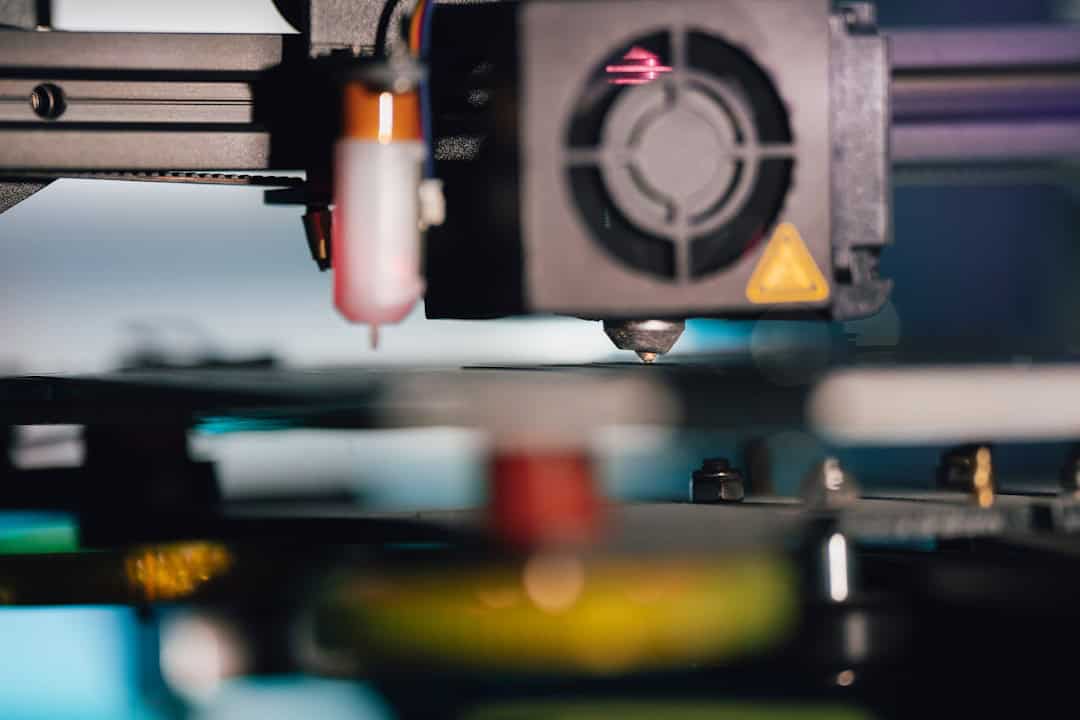Artificial intelligence (AI) and automation are on the rise as a result of the rapid advancement of technology, completely changing the way we live & work. artificial intelligence (AI) is the simulation of human intelligence processes by machines, whereas automation is the use of technology to carry out tasks with little to no human involvement. These innovations possess the power to revolutionize sectors, enhance productivity, and open up fresh avenues for creativity. The future of work and the global economy are changing as a result of the increasing integration of automation and artificial intelligence (AI) into our daily lives, which includes self-driving cars and virtual assistants. It is critical to comprehend the effects of automation and artificial intelligence on the labor force and society at large as these technologies develop. Although there are many advantages to these technologies, there are also worries about job displacement, ethical ramifications, and the requirement for new skills and training.
Key Takeaways
- AI and automation are revolutionizing the way we work, with the potential to greatly impact the future of work.
- The impact of AI and automation on jobs is significant, with the potential to both create and eliminate jobs across various industries.
- The future of work presents both opportunities and challenges, including the potential for increased productivity and job displacement.
- Education and training will play a crucial role in helping individuals adapt to the changes brought about by AI and automation in the workplace.
- Ethical and social implications of AI and automation in the workplace must be carefully considered and addressed as we adapt to a new workforce landscape.
To take advantage of the opportunities and overcome the challenges presented by this new era of technological advancement, businesses, policymakers, and individuals must all adapt. The Risk of Losing Your Job. There is growing concern about job displacement and unemployment as machines perform more & more routine tasks in manufacturing, customer service, and data entry. Many workers may lose their jobs as a result of machines taking over these tasks or find it difficult to transition into new roles.
Novel Sectors and Employment Prospects. However, automation and artificial intelligence also have the potential to open up new markets and employment opportunities. The need for qualified professionals who can create, manage, and maintain these systems is rising as technology develops. Also, human workers can concentrate on more intricate and creative aspects of their jobs by delegating repetitive tasks to AI and automation.
Techniques to Lessen Adverse Effects. In order to minimize any negative effects and maximize the positive ones, businesses & legislators must take into account the possible effects of these technologies on the workforce. By doing this, we can guarantee that everyone benefits from automation and artificial intelligence and that workers have the skills necessary to prosper in a rapidly automating economy. Businesses & individuals face both opportunities and challenges when it comes to the future of work in the age of automation and artificial intelligence. On the one hand, these technologies can spur innovation in a variety of industries while also increasing efficiency & lowering costs. To increase customer satisfaction, expedite procedures, & obtain a competitive advantage in the market, businesses can make use of AI and automation.
| Metrics | Statistics |
|---|---|
| Global AI market size | 62.35 billion in 2020 |
| Expected AI market size | to reach 190 billion by 2025 |
| Jobs at risk of automation | 800 million by 2030 |
| Jobs created by AI | 133 million by 2022 |
| AI adoption in businesses | 37% in 2020 |
Individuals have the chance to grow in their careers, explore new interests, & take on more satisfying roles requiring creativity in the workplace of the future. But there are additional issues that need to be resolved as AI and automation become more widely used. A few of the challenges that businesses and individuals in this new era must deal with are job displacement, skills gaps, ethical issues, and the need for lifelong learning.
To meet the evolving needs of the digital economy, businesses must make investments in the training and upskilling of their employees. Also, in order to guarantee a just and inclusive future of employment for everybody, legislators must take into account the social ramifications of artificial intelligence and automation, including issues like income inequality and opportunity access. Education and training are essential for equipping people for the workplace of the future as automation & artificial intelligence continue to change the workforce. It is imperative that educational establishments provide their students with the competencies & understanding required to prosper in the digital economy. This entails developing analytical skills, problem-solving techniques, digital literacy, and technical know-how pertinent to developing sectors.
Also, programs for lifelong learning and vocational training can assist present employees in gaining new, highly sought-after skills & adjusting to the shifting demands of their line of work. Companies must also make investments in employee training & upskilling if they want to stay competitive in a market that is changing quickly. This could entail giving staff members access to resources, mentorship, reskilling opportunities, and opportunities for continuous learning so they can stay abreast of technology developments. Businesses can develop a skilled workforce that can use automation and artificial intelligence (AI) to spur innovation and growth by placing a high priority on education and training. Automation and artificial intelligence bring up significant ethical and societal issues that need to be addressed in the workplace.
Concerns about job loss, income inequality, privacy, & the effects on human well-being are intensifying as these technologies proliferate. To make sure that these technologies are used responsibly and ethically, businesses & policymakers must take the ethical implications of automation and artificial intelligence into account when making decisions. It’s also important to talk about the social ramifications, like diversity and inclusion, access to opportunities, and how AI and automation will affect communities that depend on traditional industries. To guarantee that everyone has equitable access to opportunities in the digital economy, businesses must place a high priority on diversity & inclusion when planning their workforce.
The welfare of workers, clients, and communities must all be taken into account when businesses embrace automation and artificial intelligence (AI). Getting Used to the New Workforce Environment. Rethinking traditional job roles, accepting remote work opportunities, utilizing data-driven insights, & promoting an innovative and ever-learning culture are some ways to achieve this. Companies need to be flexible in how they handle talent, understanding that a wide range of skill sets are required, including both technical know-how and human-centered skills like creativity, emotional intelligence, and adaptability.
The Value of Actively Developing Your Skills. Individuals must take a proactive approach to networking, career planning, and skill development in order to adjust to the changing nature of the workforce. It is imperative that employees remain up to date on industry developments, actively pursue opportunities for skill enhancement, and adopt a growth-oriented mindset in order to prosper in a dynamic work setting. Accepting Education Throughout Life.
People can set themselves up for success in the workplace of the future by embracing lifelong learning and remaining receptive to new opportunities. This calls for a dedication to continual skill improvement, a readiness to adjust to new workflows and technologies, and an openness to exploring new professional avenues. Businesses and individuals can implement a variety of strategies that allow them to fully utilize the potential of AI & automation while minimizing associated risks in order to prosper in the age of these technologies. For companies, this can mean funding digital transformation projects that put an emphasis on diversity and inclusion, ethical AI use, employee well-being, & ongoing learning opportunities.
Businesses can establish themselves as leaders in their respective fields and furnish their employees with a positive work environment by cultivating a culture of innovation and adaptability. By being proactive in their networking, skill development, and career advancement, people can prosper in the AI and automation era. Using online courses, professional development courses, or mentorship programs, one can look for upskilling opportunities. People can also build a strong professional network that gives them access to new opportunities in developing industries as well as support & guidance.
People can put themselves in a successful position for the future of work by adopting a growth mindset and keeping up with industry trends. In conclusion, there are opportunities & challenges for the future of work associated with the rise of AI and automation. Businesses and individuals can prosper in this era of technological advancement by comprehending their impact on jobs, supporting initiatives for education and training, thinking about ethical implications, adjusting to a new workforce landscape, and implementing strategies for success.
Cooperation amongst all parties involved is crucial to ensuring that the future of work is morally and inclusive, innovative, and serves society as a whole.
If you’re interested in the future of AI and automation, you may want to check out this article on why the metaverse may die. It discusses the potential impact of AI and automation on virtual worlds and online communities, providing valuable insights into the intersection of technology and society.
FAQs
What is AI and automation?
AI, or artificial intelligence, refers to the simulation of human intelligence processes by machines, especially computer systems. Automation, on the other hand, involves the use of technology to perform tasks with minimal human intervention.
How are AI and automation used in various industries?
AI and automation are used in various industries such as manufacturing, healthcare, finance, transportation, and customer service to streamline processes, improve efficiency, and reduce human error.
What are the benefits of AI and automation?
The benefits of AI and automation include increased productivity, cost savings, improved accuracy, enhanced safety, and the ability to handle repetitive tasks more efficiently.
What are the potential drawbacks of AI and automation?
Potential drawbacks of AI and automation include job displacement, privacy concerns, ethical considerations, and the need for ongoing maintenance and updates.
How is AI and automation impacting the workforce?
AI and automation are changing the nature of work by automating routine tasks, creating new job opportunities in the tech industry, and requiring workers to develop new skills to adapt to the changing landscape.
What are some examples of AI and automation in everyday life?
Examples of AI and automation in everyday life include virtual assistants like Siri and Alexa, self-driving cars, recommendation algorithms on streaming platforms, and automated customer service chatbots.











Leave a Reply